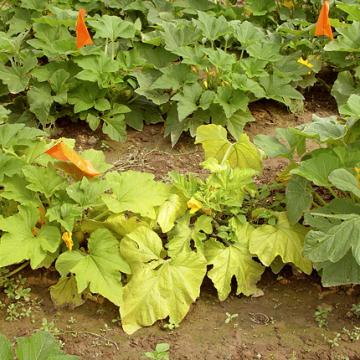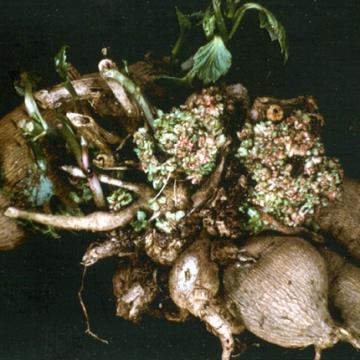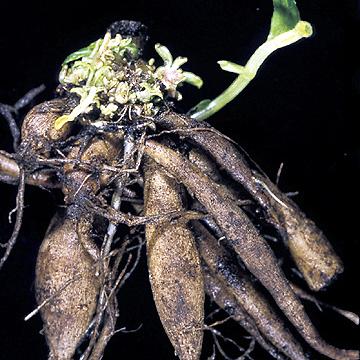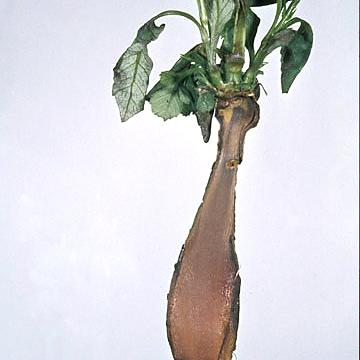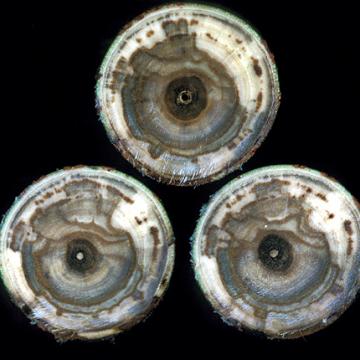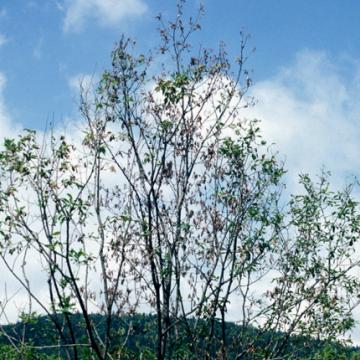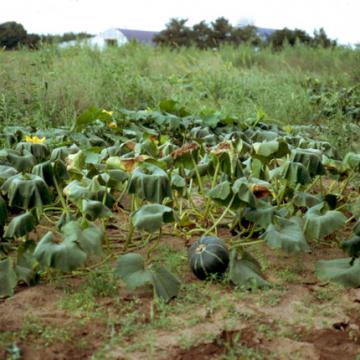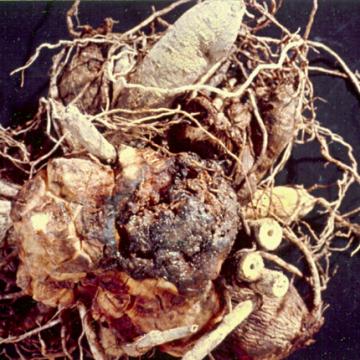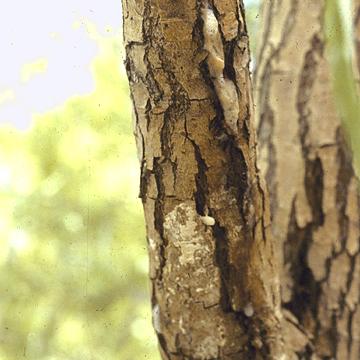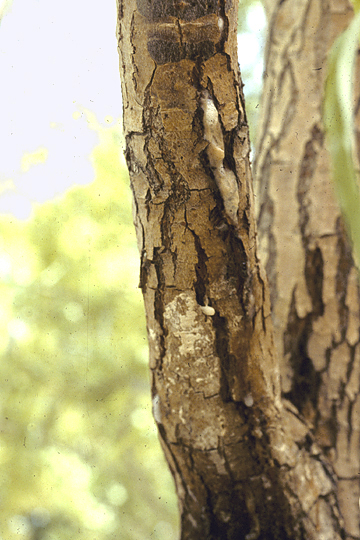DISEASE: Aster yellows
HOST: Squash
Diagnostic characteristics for the disease are yellowing of young leaves, proliferation of secondary shoots, and rigid erect habit. Leaves are misshapen and smaller than normal and have stiff, thick laminae.
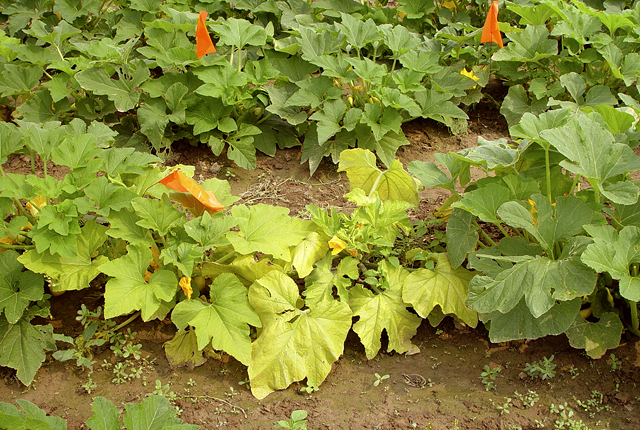
Aster yellows | Squash
DISEASE: Aster yellows
HOST: Squash (Cucurbita sp.)
PATHOGEN: 'Candidatus Phytoplasma asteris'
PATHOGEN SYNONYM: Phytoplasma Aster yellows group
SOURCE: S. Miller
DISEASE: Bacterial fasciation (Leafy gall)
HOST: Dahlia
Dalhlia tubers with proliferation and leaf development.
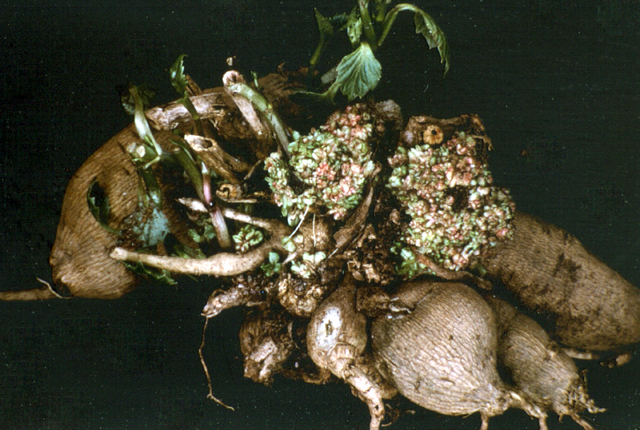
Bacterial fasciation (Leafy gall) | Dahlia
DISEASE: Bacterial fasciation (Leafy gall)
HOST: Dahlia (Dahlia sp.)
PATHOGEN: Rhodococcus fascians
SOURCE: M. Shurtleff
DISEASE: Bacterial fasciation (Leafy gall)
HOST: Dahlia
Bacterial fasciation of dahlia tubers.
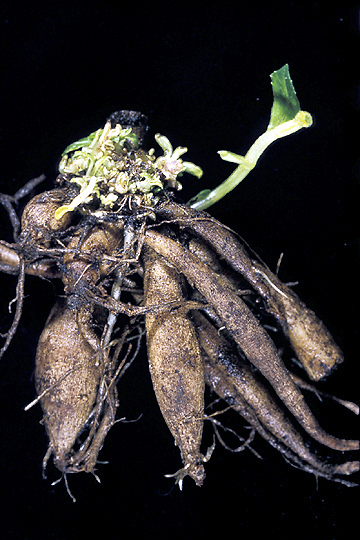
Bacterial fasciation (Leafy gall) | Dahlia
DISEASE: Bacterial fasciation (Leafy gall)
HOST: Dahlia (Dahlia sp.)
PATHOGEN: Rhodococcus fascians
SOURCE: H. van Hoof, M. Geesteranus
DISEASE: Bacterial rot
HOST: Dahlia
Longitudinal section of dahlia with discolored, rotted tissues.
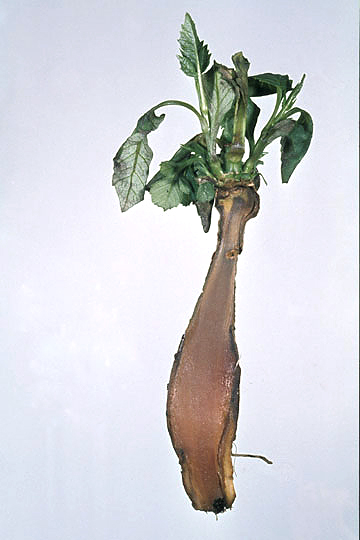
Bacterial rot | Dahlia
DISEASE: Bacterial rot
HOST: Dahlia (Dahlia sp.)
PATHOGEN: Dickeya sp.
PATHOGEN SYNONYM: Erwinia chrysanthemi
SOURCE: J. Young
DISEASE: Bacterial wilt and dieback
HOST: Willow
Cross sections of the characteristic "watermark stain" of diseased wood. Wilt and dieback occur as disease progresses.
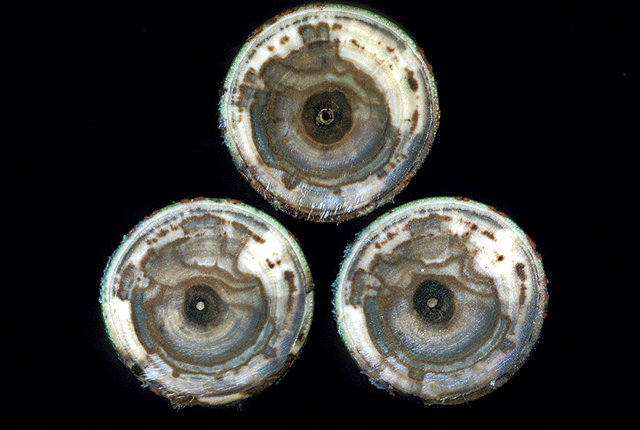
Bacterial wilt and dieback | Willow
DISEASE: Bacterial wilt and dieback
HOST: Willow (Salix sp.)
PATHOGEN: Brenneria salicis
PATHOGEN SYNONYM: Erwinia salicis
SOURCE: Y. Sakamoto, M. Goto
DISEASE: Bacterial wilt and dieback
HOST: Willow
Severely diseased tree with dieback symptoms.
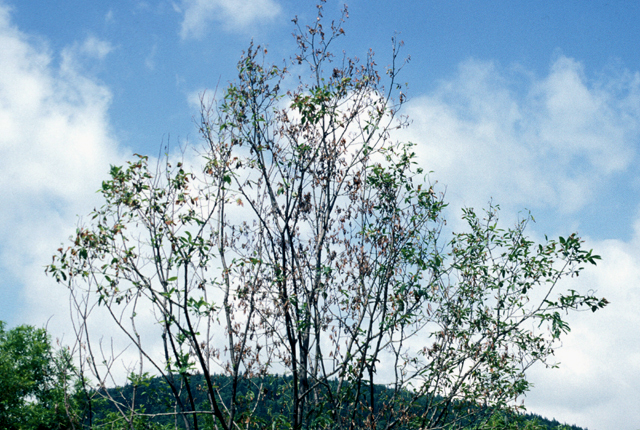
Bacterial wilt and dieback | Willow
DISEASE: Bacterial wilt and dieback
HOST: Willow (Salix sp.)
PATHOGEN: Brenneria salicis
PATHOGEN SYNONYM: Erwinia salicis
SOURCE: Y. Sakamoto, M. Goto
DISEASE: Bacterial wilt
HOST: Squash
Field with severe symptoms of wilt. Foliage often is chlorotic and leaf margins may be chlorotic and necrotic before plant death. Bacterial ooze may be seen streaming from the xylem when infected stems are cut.
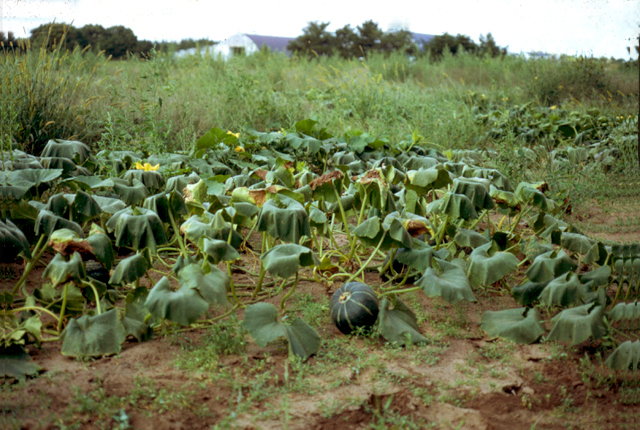
Bacterial wilt | Squash
DISEASE: Bacterial wilt
HOST: Squash (Cucurbita maxima)
PATHOGEN: Erwinia tracheiphila
SOURCE: B. Jacobsen, M. Shurtleff
DISEASE: Crown gall
HOST: Dahlia
Crown gall of dahlia tubers. Note brownish, rough-surfaced galls, one of which shows rot. Galls often are infected by microorganisms that cause rot.
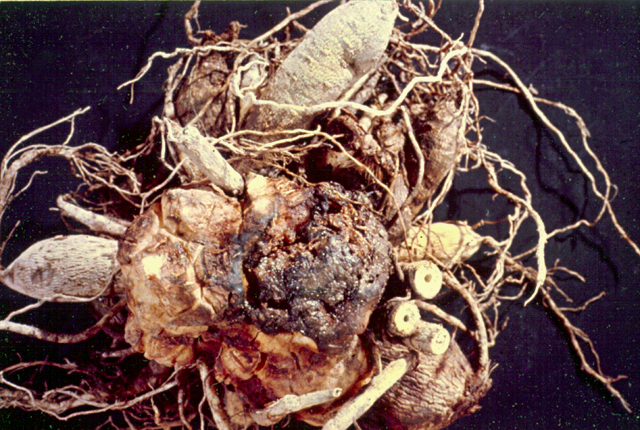
Crown gall | Dahlia
DISEASE: Crown gall
HOST: Dahlia (Dahlia sp.)
PATHOGEN: Agrobacterium tumefaciens
PATHOGEN SYNONYM: Rhizobium sp.
SOURCE: M. Shurtleff


